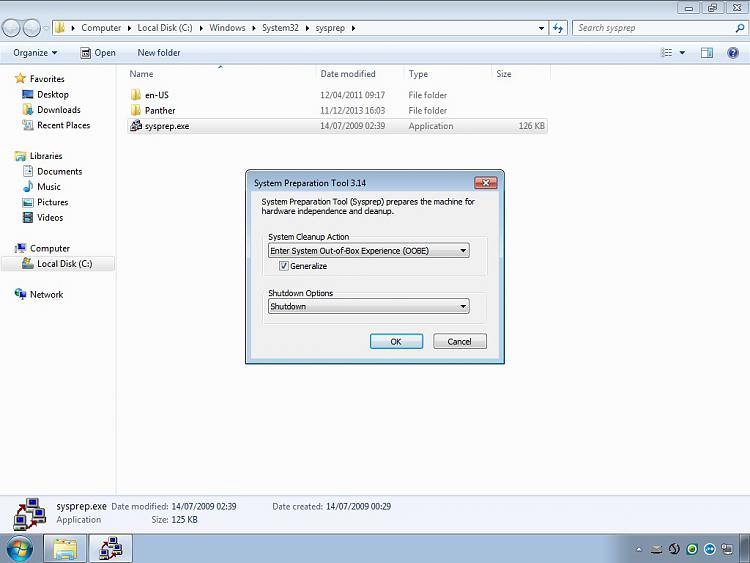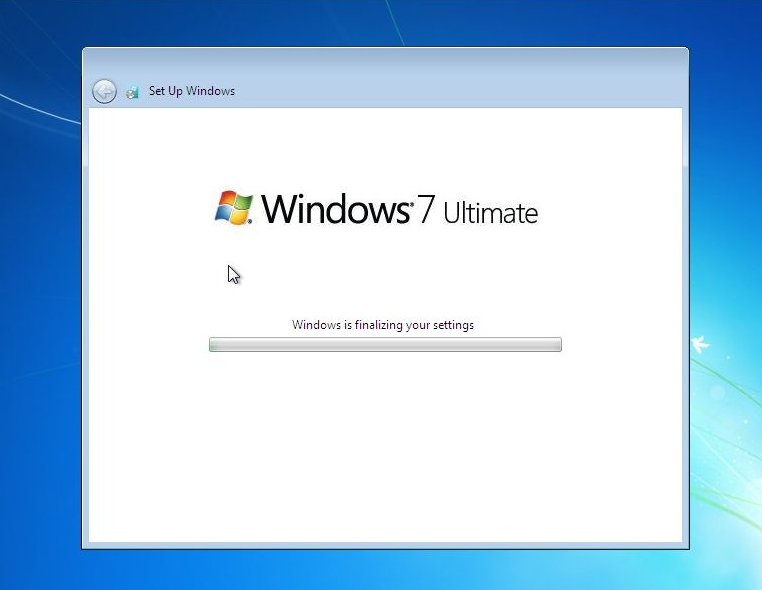Sysprep Windows 7 32 Bit
| File Info | Description |
|---|---|
| File Size: | 384 kB |
| File Modification Date/Time: | 2017:03:18 18:18:42+00:00 |
| File Inode Change Date/Time: | 2017:11:05 07:07:54+00:00 |
| File Type: | Win32 EXE |
| MIME Type: | application/octet-stream |
| Warning: | Possibly corrupt Version resource |
| Machine Type: | Intel 386 or later, and compatibles |
| Time Stamp: | 2006:10:19 10:16:17+00:00 |
| PE Type: | PE32 |
| Linker Version: | 14.10 |
| Code Size: | 309760 |
| Initialized Data Size: | 84480 |
| Uninitialized Data Size: | 0 |
| Entry Point: | 0x482c0 |
| OS Version: | 10.0 |
| Image Version: | 10.0 |
| Subsystem Version: | 10.0 |
| Subsystem: | Windows GUI |
| File Version Number: | 10.0.15063.0 |
| Product Version Number: | 10.0.15063.0 |
| File Flags Mask: | 0x003f |
| File Flags: | (none) |
| File OS: | Windows NT 32-bit |
| Object File Type: | Executable application |
| File Subtype: | 0 |
| Language Code: | English (U.S.) |
| Character Set: | Unicode |
| Company Name: | Microsoft Corporation |
| File Description: | System Preparation Tool |
| File Version: | 10.0.15063.0 (WinBuild.160101.0800) |
| Internal Name: | sysprep.EXE |
| Legal Copyright: | © Microsoft Corporation. All rights reserved. |
| Original Filename: | sysprep.EXE |
| Product Name: | Microsoft® Windows® Operating System |
| Product Version: | 10.0.15063.0 |
✻ Portions of file data provided by Exiftool (Phil Harvey) distributed under the Perl Artistic License.
In fact, the Windows Server 2008 R2 Enterprise image contains eight operating system variants and the 32-bit edition of Windows 7 Ultimate contains five variants. Capture A Custom Windows 7 System Image By Sysprep Windows PE. How to SysPrep your Windows 7 Image. I copied my Windows 7 DVD to a folder on a drive with lots of space free. I probably didn't need to copy it over, but it likely made the process faster. Then I downloaded and installed the Windows® Automated Installation Kit (AIK) for Windows® 7. This file is a large ISO (1.5G) so be aware.
You can modify and use this unattend file when running sysprep on a 32 Bit (x86) Windows 7 computer. Alternatively you can easily create your own unattend file using the Sysprep Creator Wizard developed by KACE Support and Training, see Sysprep Creator Wizard. SYSPREP - XML answer file in windows 7-32 bit To add to Hayes answer, you get the System Image Manager tool from the Windows Automated Installation Kit (WAIK), which is a free download from MS (For Windows 7 you either need the Windows 7 RC waik, or the RTM WAIK, which is now available to technet/msdn subscribers.). Windows 7 Sysprep Copy Taskbar Icons The vbs script is a little nicer than version one (CMD) because it runs without any windows and in my opinion vbs scripts just run smoother:). Also, it is a single file and the tutorial has less steps.
About eighteen months ago, I blogged about how to run Sysprep for Windows Server 2008 and this has turned out to be the most popular article on this site by a long shot, so I figured I'd update it for Windows Server 2008 R2 (and Windows 7). If you never had the need to look at Sysprep in Windows Vista/2008, you'll find that it's nothing like what you're used to on Windows Server 2003, XP, etc.
The first step is acquiring the Windows Automated Installation Kit (WAIK) and installing it on a machine. It will run fine on a Windows Vista or Windows Server 2008 machine. You can get it from Microsoft's website at http://www.microsoft.com/downloads/details.aspx?displaylang=en&FamilyID=696dd665-9f76-4177-a811-39c26d3b3b34. /nokia-free-unlock-code-online-calculator-by-imei.html.
The tool of choice is the Windows System Image Manager (WSIM). When you start it you'll get a blank screen like this:
The first step is to open the image file for the Windows SKU you want to build a sysprep file for by going to File>Select Windows Image:

All of the settings you will want to setup in your unattend.xml file are in the tree under Windows Image. The documentation for all the settings can be found in the Unattended Windows Setup Reference CHM file which ships with the WAIK. This link http://technet.microsoft.com/en-us/library/cc749272(WS.10).aspx shows a mapping table between the sysprep.inf file and the new unattend.xml format. This link is for Windows Vista but it still applies.
All of the various settings can be applied during different passes of the setup process which sysprep will trigger. You can read about these passes here. I built a simple unattend file just for sysprep'ing my base image which includes settings in the generalize, specialize, and oobeSystem passes. All of the settings I chose are outlined below.

My answer file tree:
Disabling the initial configuration dialog:
Sysprep Windows 7 32 Bit 64
Disabling Server Manager from loading at first run:
Setting the Internet Explorer homepage to 'about:blank', turning off the IE8 Accelerators, and disabling the first run wizard:
Setting Google as my default Search Provider in Internet Explorer:
There are two versions of Internet Explorer on a 64-bit machine – the 64-bit IE and the 32-bit one. You'll need to set the settings for them independently. Duplicate the above IE configuration in the wow64_Microsoft-Windows-IE-InternetExplorer_neutral component:
Setting my product key, timezone settings, and my name:
Configuring localization settings – if you want something other than US English, look under Input Locales in the index of the Unattended Windows Setup Reference CHM file referenced earlier:
Configuring the screen resolution and color depth - 1280x960 is what works for me in VMWare full screen mode with the tabs across the top:
Configuring setup not to show me the EULA again:
Configuring setup to install a default local administrator account password:
One of the things that's unlike Sysprep from Windows 2000 – Windows Server 2003 is that the unattend.xml file isn't deleted at the conclusion of the Sysprep process. The down level Sysprep deletes the c:sysprep folder when it finishes. In order to replicate this functionality, you can put a command in to delete the unattend.xml file in the SetupComplete.cmd batch file (which must be located in c:windowssetupscripts) which gets called at the end of Sysprep.
I put a simple one line command in my SetupComplete.cmd file:
del /Q /F c:windowssystem32sysprepunattend.xml
In order to run Sysprep you'll need a new command. The old Sysprep UI that was there in Windows 2000 - 2003 doesn't really exist anymore. All of the Sysprep command line switches are documented at http://technet.microsoft.com/en-us/library/dd744330(WS.10).aspx.
Sysprep Windows 7 32 Bit Iso
sysprep /generalize /oobe /shutdown /unattend:unattend.xml